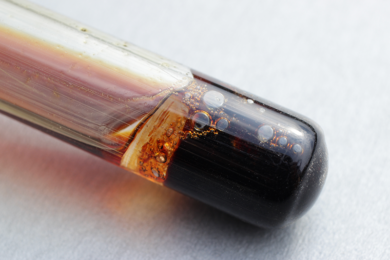Redpath Mining Africa is set to showcase its full-service capability offered to the contract mining industry, including its latest raiseboring technology, and two recently-completed key projects, at Investing in African Mining Indaba 2017, February 6-9 at the Cape Town International Convention Centre.
One of these projects was a world-first decline sand tunnel for Gem Diamonds at its Ghaghoo diamond mine, near the southeast border of the Central Kalahari Game Reserve, a remote area characterised by its expansive and up to 80-m-deep sand cover (see the article in International Mining, September 2014).
The scope of work involved a 6-m-diameter decline tunnel development to 112 m below surface through shifting Kalahari sand at an 8° inclination. Phase 1 saw a 25-m-deep, 171-m-long box cut in the Kalahari sand to provide safe and secure access to the underground mine.
This was followed by excavation work using an open face tunnel shield (OFTS) for the concrete-lined segmented sand tunnel, of which 403 m was in pure sand, and 121 m transitioning from sand to basalt.
The 95 t OFTS acted as a cylindrical shield to protect workers and equipment underground, and also provided the necessary support to install the required 845 concrete segments for the tunnel. While such technology or methodology is not new, it had never been used in a decline before.
Within South Africa, Redpath Mining Africa has also achieved great success rehabilitating Phakisa Number 3 Ventilation Shaft for Harmony Gold. A shale band about 80 m thick (starting from 120 m from surface) had swollen, and broken out the shaft lining into the shaft cavity, causing a serious reduction and restriction in the ventilation flow within the workings. The fast-track rehabilitation of the collapsed vent shaft barrel was critical to sustain production output.
The rehabilitation method saw inflatable lightweight balloon-type bags lowered into the shaft-equipped compartments to a depth of about 210 m from surface. The bags, guided by a camera, formed a plug in the shaft barrel just below the damaged area.
After the plug in the shaft was established, the shaft barrel and cavity were filled with aerated foam cement. This stabilised the area, and enabled the team to mine through the aerated cement and pour a new lining to stabilise the shaft. The project was completed without a single injury, achieving 504 accident-free days.
“These two projects highlight our innovative solutions and expertise in developing custom solutions for our clients’ specific needs,” Redpath Mining Africa Marketing and Business Infrastructure Manager Davlin Richardson comments.
“We want to reach out to all of the key players and stakeholders who will be present at Mining Indaba 2017, with the message that we can play a critical role in developing cost-effective and safe solutions to help unlock the continent’s mining potential,” Richardson explains.
In addition to scale models of both the Phakisa and Ghaghoo projects, the Redpath Mining Africa stand will also feature scale models of the Redbore 100 and Redbore 50 raise drill machines. The former is the most powerful, largest-capacity proven raise drilling system ever manufactured by the Canadian parent company. It can bore raises of up to 8 m in diameter and to depths of 1000 m.
The Redbore 50 is a mid-capacity drill aimed at replacing bulkier, more costly equipment. It has the same footprint as the Redbore 40, requiring only slightly more back height. Available in an electronic or hydraulic version, the Redbore 50 can be configured to down-ream 724-mm-diameter holes. Nominal capacities range from 2.13 m diameters, with raise lengths of up to 183 m.
“Our full-service offering for the African mining industry is based on the fact that we have a proven track record, fully understand local conditions, and operate in various countries throughout Africa. We supplement this unique understanding with the latest technology available, bringing a wealth of international experience. This results in significant knowledge transfer, which is of huge benefit to the continent,” Richardson concludes.










